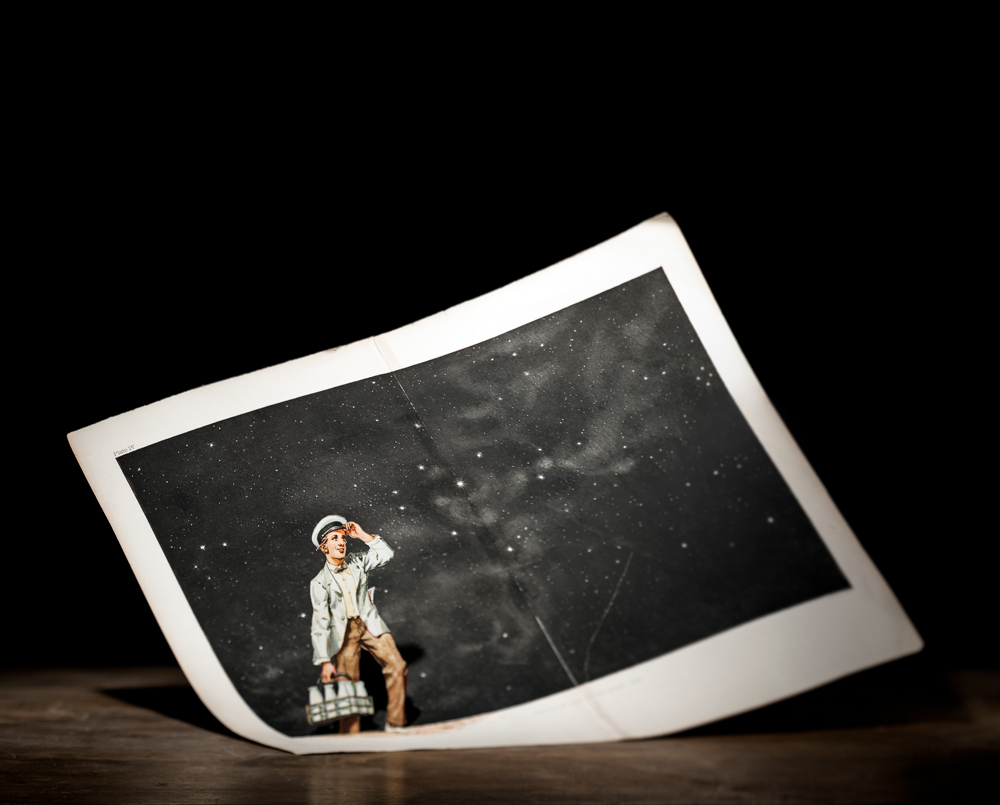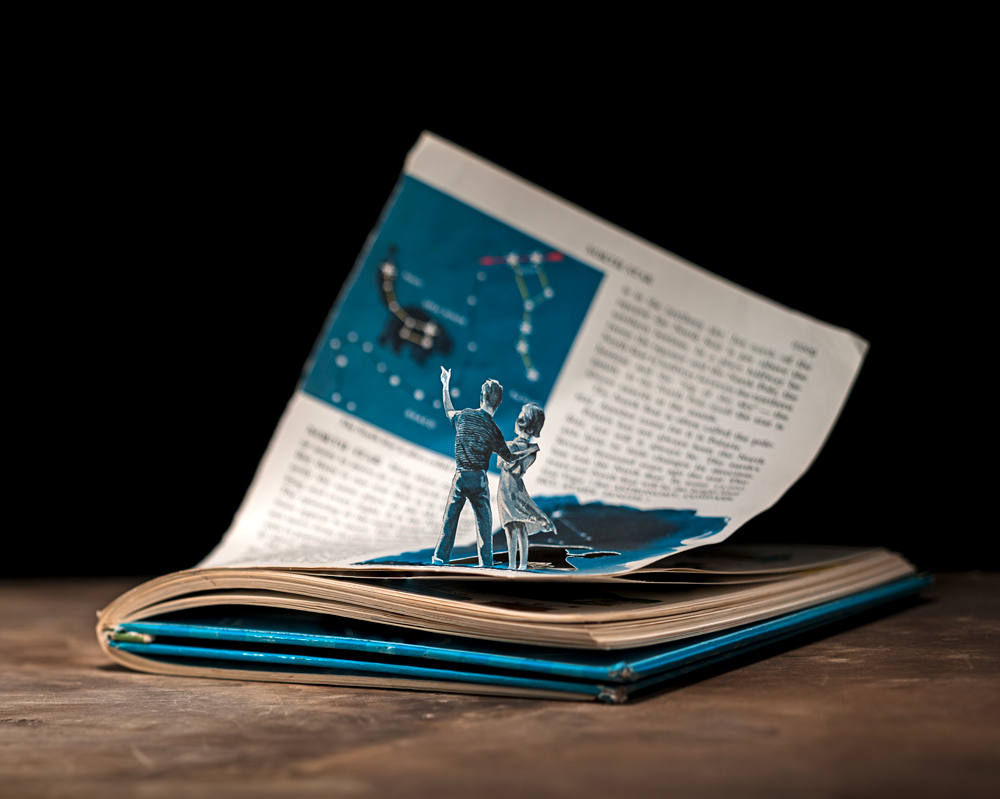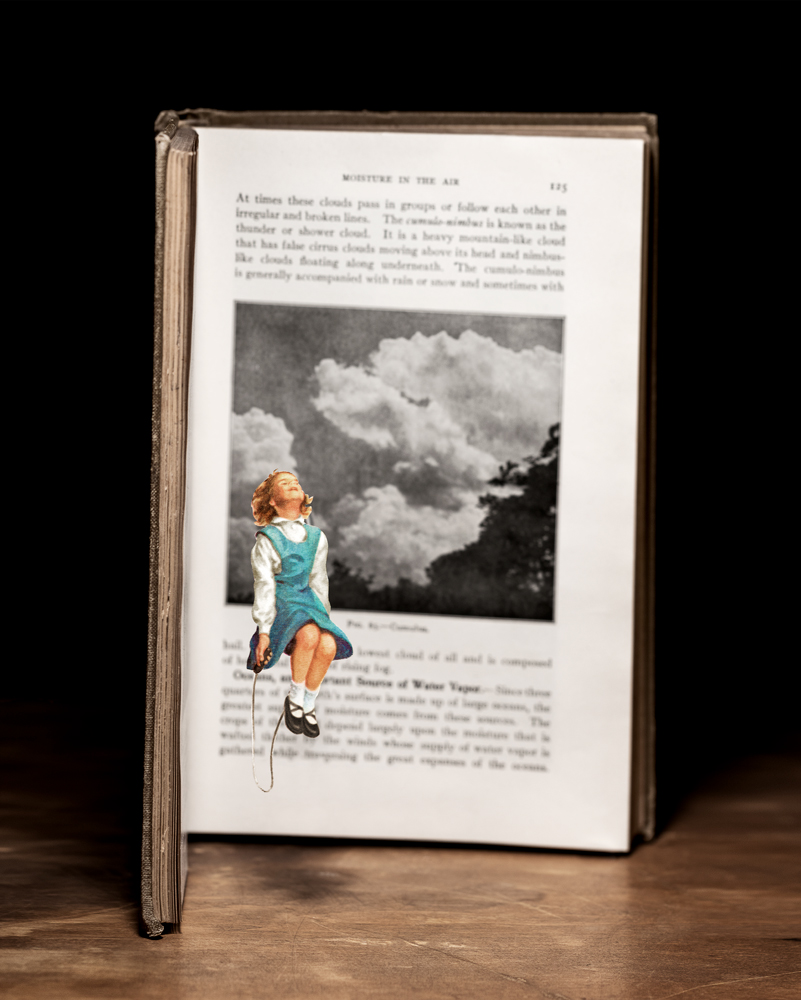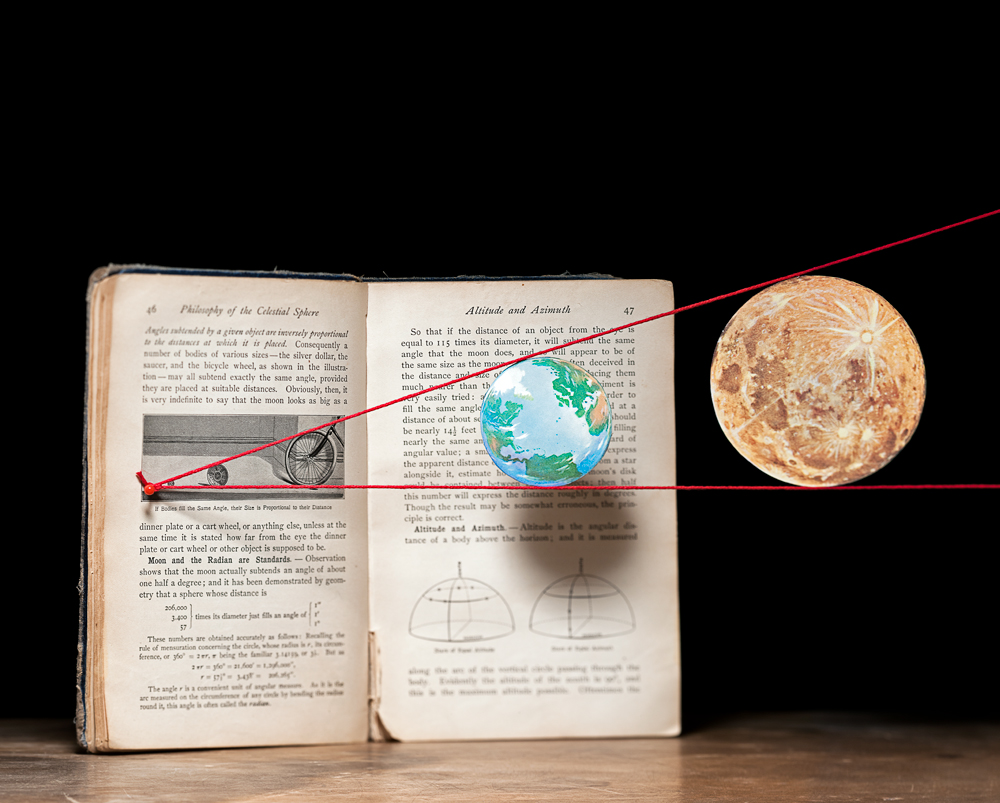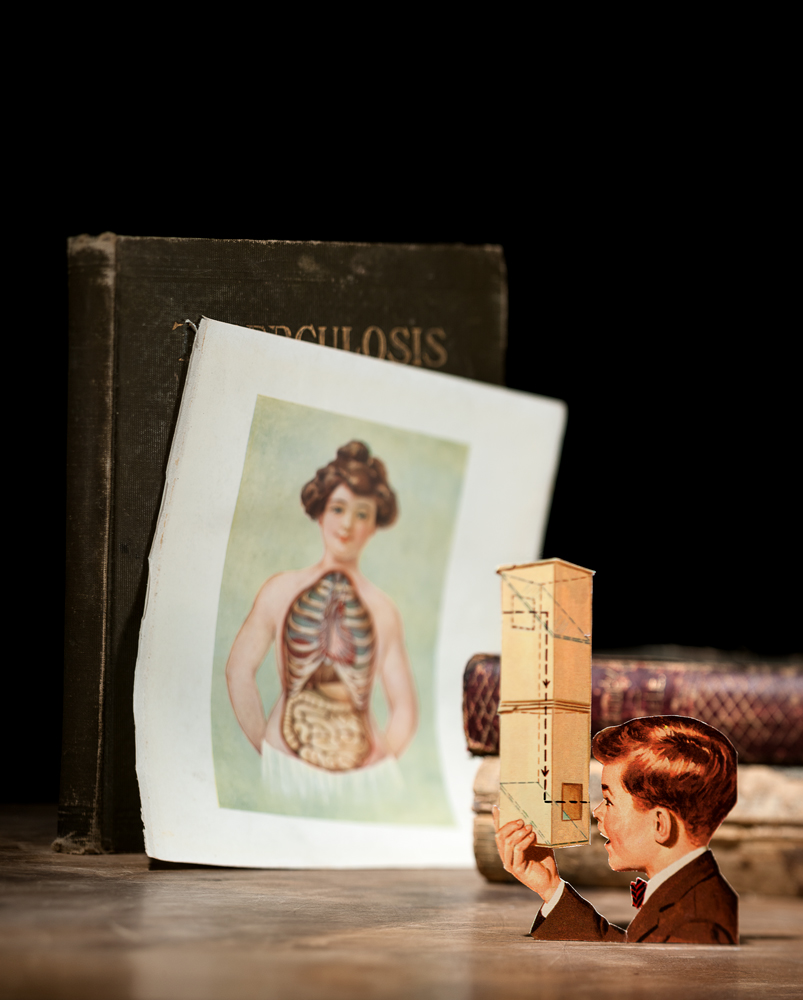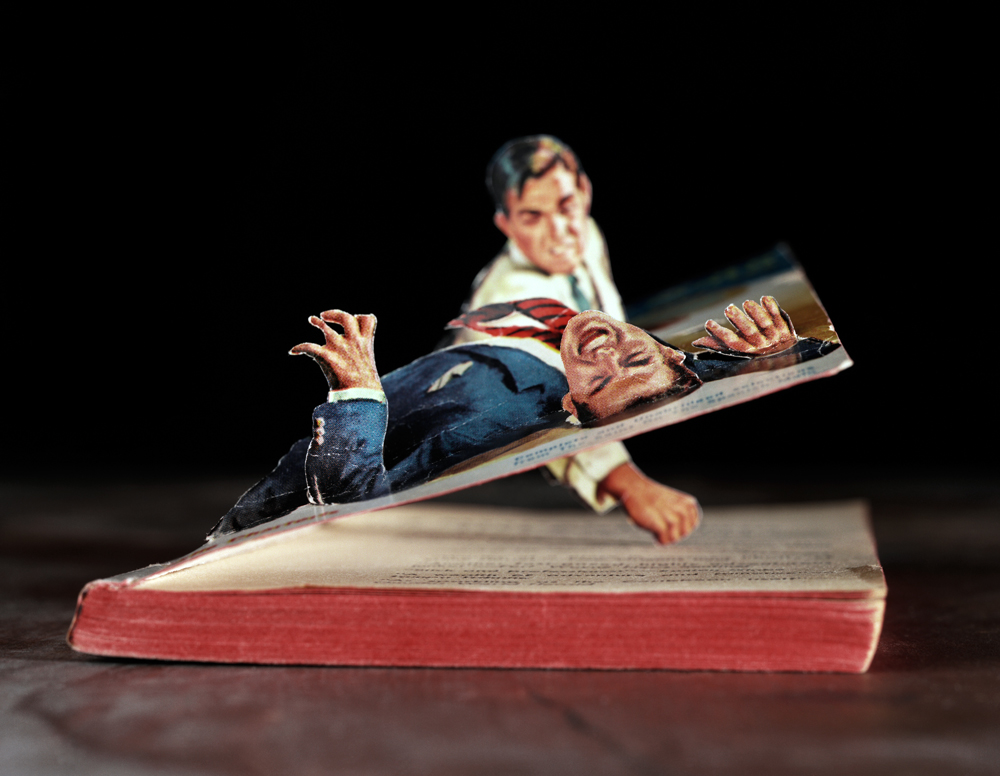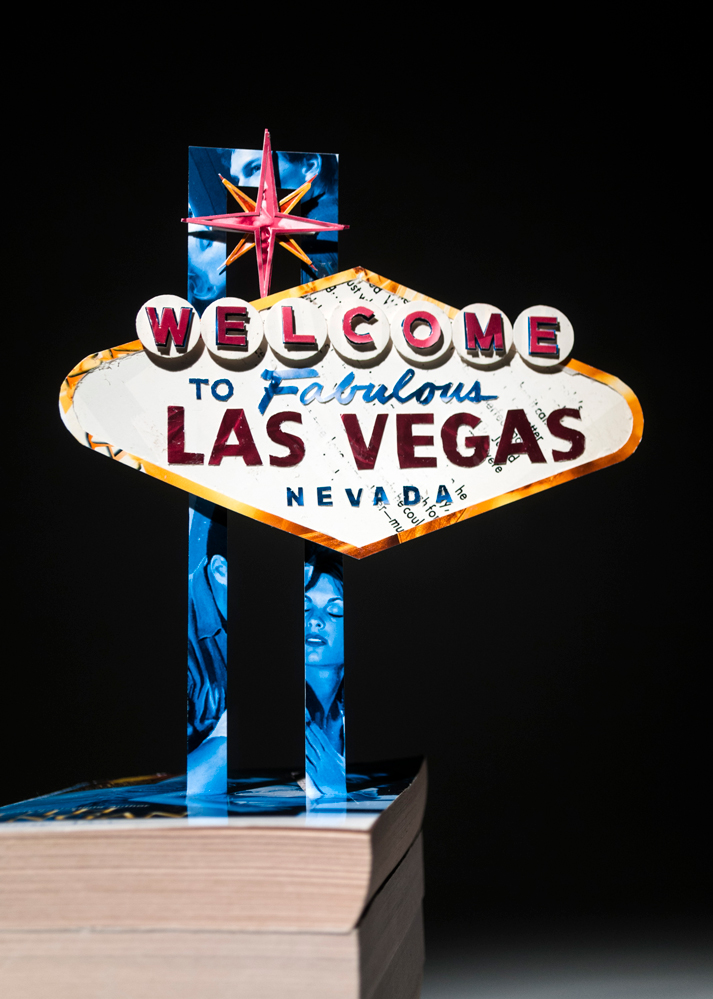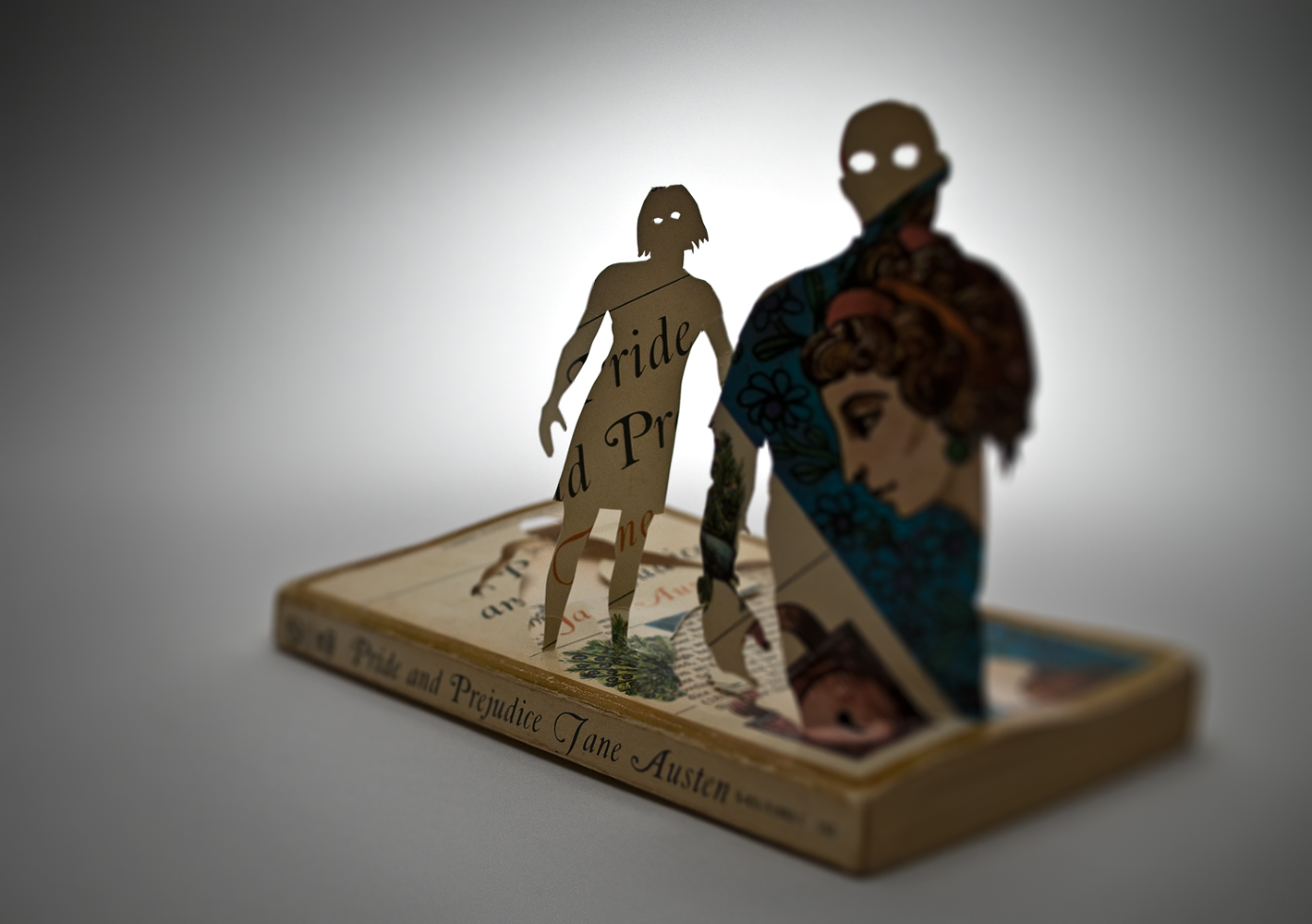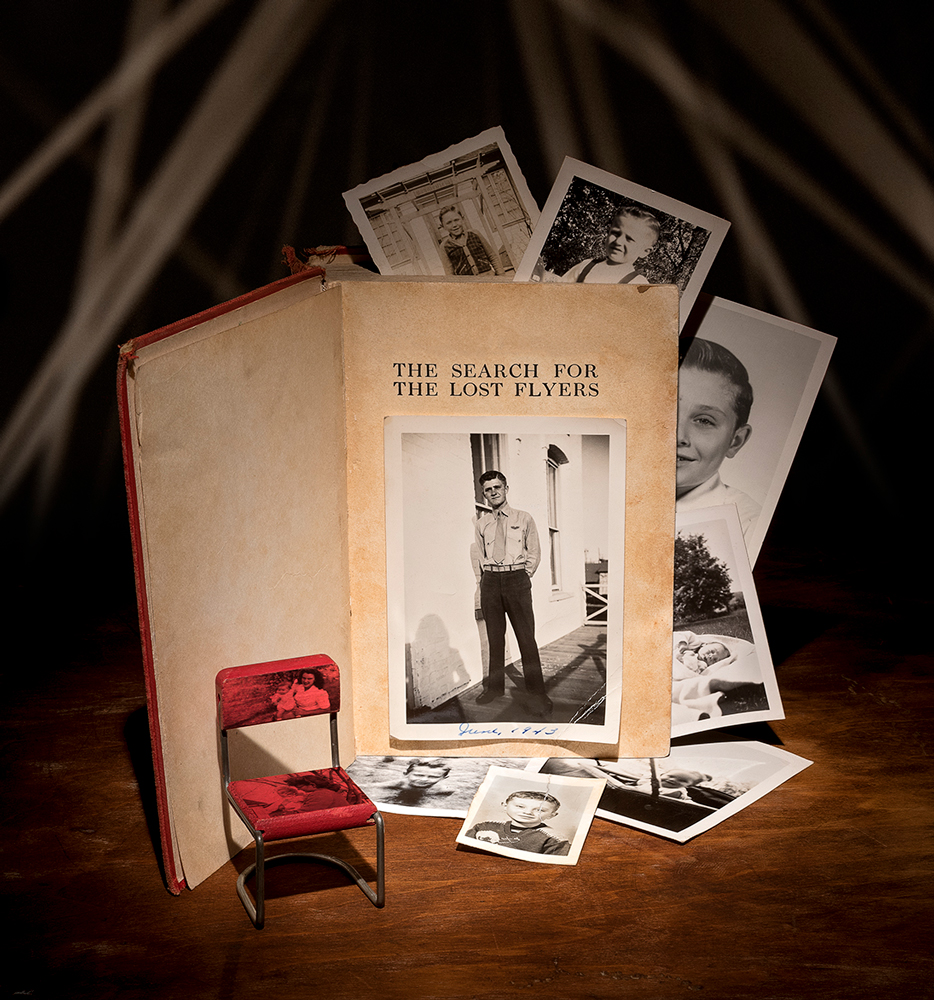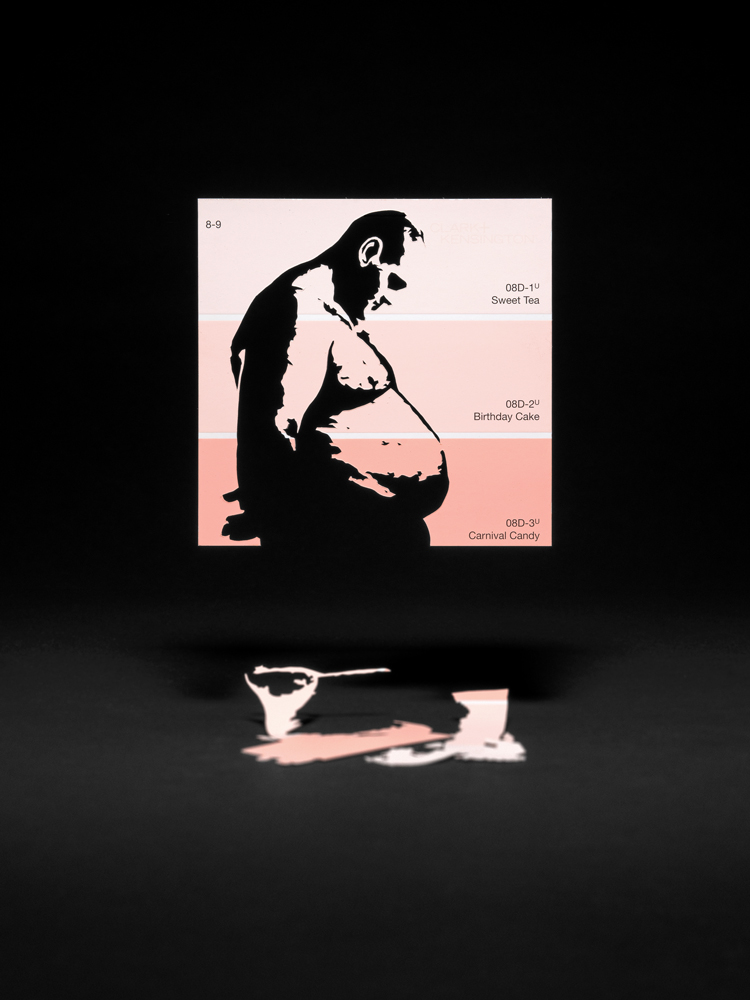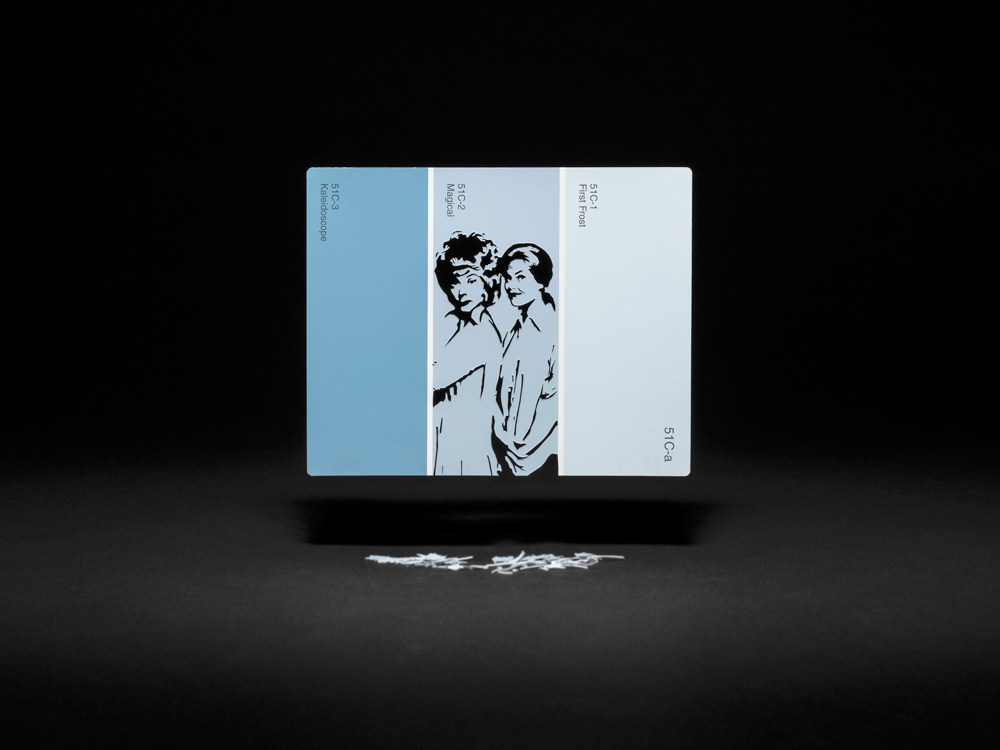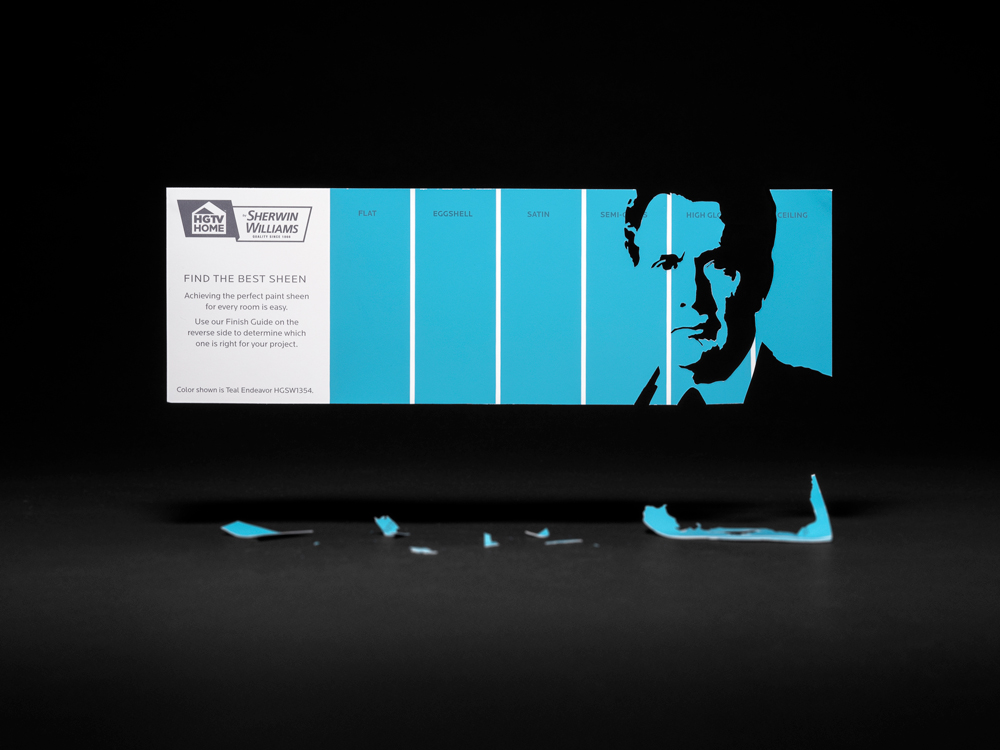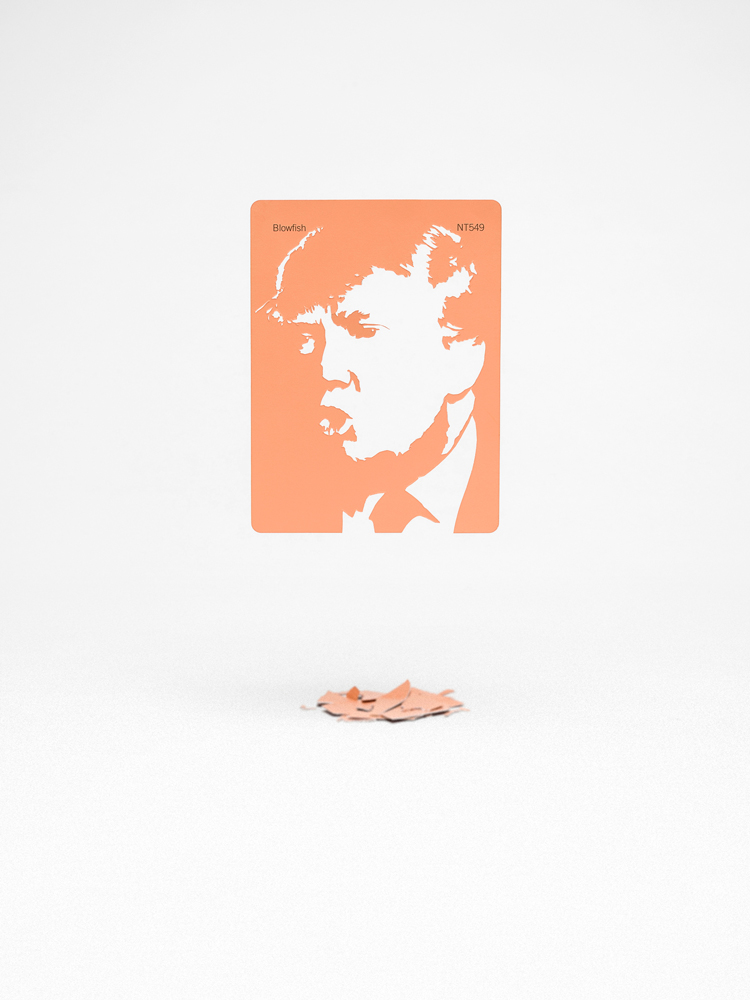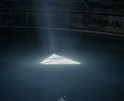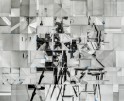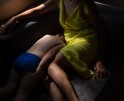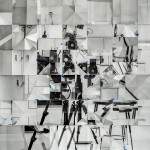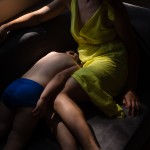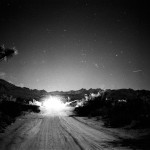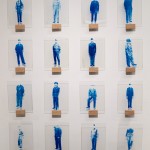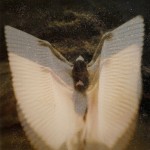Thomas Allen: A Studio of One’s Own
I discovered Thomas Allen’s work in 2006 when I was a lowly intern at an art gallery in Boston. The work was staged and rephotographed pulp fiction novels-they were clever and provocative. But what I remember most about that show was how unassuming and kind the artist, Thomas Allen, was. I was so pleased to have an opportunity to connect with him again and see what he’s been up to.
Thomas Allen is a career artist, illustrator and distance runner. He is represented by Foley Gallery (New York). His work has been exhibited nationally and internationally and is in the permanent collections of the Museum of Fine Arts—Houston, The Milwaukee Art Museum, the Nelson-Atkins Museum of Art, Target Corporation, Fidelity Investments, Microsoft, the Progressive Corporation and Twitter. Allen’s photo illustrations have appeared in over 50 publications worldwide including The New York Times Magazine, Vanity Fair, Telerama, LeMonde and Dance Gazette. In 2010, he received a SPOTS Gold Award from The Society of Publication Designers and was nominated for an American Illustration Award in 2014 – both for his work with Harper’s. Allen lives on a 4.5 acre farm in southwest Michigan with his wife, daughter and far too many animals! His monograph, UNCOVERED: Photographs by Thomas Allen was published by Aperture Foundation in 2007.
Rita Lombardi:This is a great excuse for me to talk to other artists and see what people are up to. I know that you work in a variety of ways but my impression is that you work mostly from your studio.
Thomas: To be more specific, my basement. Everything is photographed there.
Rita: How did you start to make work this way? From home. Is this something you’ve always done, or has it evolved out of necessity?
Thomas: It actually happened in 2004. In 2003 I taught a two-month workshop at Penland school of crafts and I quit my job to do it. I got married in 2002 and my wife said — they weren’t going to give me a leave of absence — and my wife said, just quit. So I did. I went there for two months, came home, and my wife got pregnant, and then she lost her job. So it was like one spiral after another. So I went to work as an office manager and they pretty much saved us, saved our lives. Then our daughter was born in 2004 and after she was born my wife said, you know what, we’re too far from family, let’s move back to Michigan. I was working with a gallery in Minneapolis, Thomas Barry Fine Arts, and I had met Michael Foley one time … and he called me just before we moved and he was going out on his own and would you want to work with me. So I said absolutely, and was going to have a show in December. In November, the day the truck was loaded, the movers had just pulled away, and I got a phone call that Michael had sold 14 prints. So in the meantime, I’m panicking because we’re going to be on Cobra, how am I going to afford all this? So that eased my mind. Then we moved here and I just continued to make work and shortly after the move here I got an email from GQ wanting to know if I was able to make a photo illustration. That’s how that all started. I never went out to search for it, they came to find me. So I continue to do it. It’s feast or famine at times. I made new work in 2015. Even now, I thought, this would be a great time to make new work, pandemic wise, but I’m just so scattered.
Rita: It seems like it would be a good time but everything’s so concentrated into one location, overlapping, it’s hard for a lot of people.
Thomas: I sit here and think this would be a good time to do things around the house but even then I just feel emotionally paralyzed. I just don’t want to do anything. I am homeschooling with my wife. My daughter is 16, in her sophomore year in high school. It’s been really tough on her.
I have a friend who started a beverage startup, several years ago, called Fruitbelt. It’s a sparkling fruit tonic. They’re marketing it now as a mixer. So I created the entire identity for that. All the packaging, all the labels. So that’s really been a sustaining force for us. My wife continues to work. She works three days a week from home but now she’s working at home all the time.
Rita: And you have a lot of animals!
Thomas: We have way too many animals. And they keep showing up! I just bought three turkeys. The ducks are good. We have duck eggs. We incubated 20, 6 hatched, 5 survived. One has a bum leg… We have three greenhouses. My wife grows most of our food. We raise chickens to eat.
Rita: Did you start doing the tabletop constructions in 2003 or had you been doing those longer?
Thomas: I’d been doing them since undergrad. Just before I graduated undergrad. I had an advisor, Jim Raymo, who was a big constructed collage kind of guy. I was using kids books and tearing text from kids books and reassembling it to tell stories from my childhood and photographing it. The pulp novels were after graduate school. In graduate school I photographed altered science books. So that was more using scientific illustrations to tell a story that was fiction.
Rita: Is that Beautiful Evidence? I love those, how you talk about that sense of wonder.
Thomas: That came about after. I never thought I was really finished with what I did with that in graduate school. I actually approached it very differently in graduate school. I was making the cutouts with a printer. But these are all found things. And the pulp novels kind of came about by accident. I was cutting one one day and I tried to pop it up and it just kind of came to life. That’s the work that Michael Foley saw.
Rita: I remember that show at Carroll and Sons in Boston. Around 2006? That’s when I first saw your work. I was working there at the time.
I’m picturing you making these things and being alone and cutting things out and the sort of meditative nature of that, not having to deal with people, and I’m wondering how many things you had to go through to get to that place. Where you were like, ok, this is what I’m doing and it’s all I want to do.
Thomas: I’ve always been someone who would rather make something for the camera than go out in the world. It’s been like that from day one. Some of my big influences in undergrad were Olivia Parker, and Arthur Tress, The Teapot Opera, Duane Michals.
I was a criminal justice major in school. It took me ten years to get my undergrad degree. I dropped out for a year. I was really miserable. My GPA was like a 2-something. And then I was just like, do what you want to do, and I took art classes, and I took this photo class and the world changed from that point. So then I saw the Vanishing Presence show at the Detroit Institute of Art and that show just blew my mind. It was all about how the camera records time. From that point on I just wanted to make things for the camera. For me, the stuff that I make is almost more important than the actual photograph. The doing, the precamera work is actually more fun than the camera work.
I keep all the books after I photograph them. They’re all in bags with labels in a box.
Rita: Do you ever show the books?
Thomas: I have shown them together. I’ve been in a couple shows where I have shown them together [with the photographs].
Rita: Do you feel like it’s revealing too much? There’s so much camera work that you do in the photographs.
Thomas: It’s a one point perspective. If you move left or right the trick is completely blown. So to let people see that, it kind of helps people understand, kind of demystifies it. Sometimes people think that it’s digital and it’s not!
Rita: Do you use a 4×5?
Thomas: Before I switched to digital it was all 4×5, yes. So the paint card cutouts I just used my Nikon. But for Beautiful Evidence, that work, I bought a mount for the back of my view camera that allows you to attach a Nikon. So you shoot multiple frames and stitch them all together to make a huge hi-res file. That’s what I use now. I get much better definition. 3 frames across the top, flip it over and three frames across the bottom. Photoshop does a really good job at stitching it.
It’s kind of a compromise between a digital back and a view camera. It’s something I didn’t have to mortgage my house to buy. I love my view camera. The paint card stuff, I felt like it was kind of cheating because I could shoot so many frames and then just choose one. I had to buy a bag bellows to use this adapter.
Rita: The paint cards are tiny! I just think they’re really clever. Taking the names and making pictures to go along.
Thomas: The only real trick I did digitally was that they were all hung from fishing line and I removed the fishing line in post.
Rita: Has your work space always been wherever you can grab a space?
Thomas: I have a home office now, in grad school I had a studio, in undergrad it was all at home, my bedroom, wherever I could find.
Rita: Do you have any fancy lighting setup?
Thomas: It’s funny you say that because when I have students I tell them you don’t need expensive lighting to make work. I got a fellowship out of grad school and I bought a Lowell hot light kit. Now I have a Lowell soft box, a big one, which is hung from a screw in my basement from the rafters. If I need to get higher I have a boom in my garage. But that’s all I have, it’s nothing fancy. For Beautiful Evidence I was using a little clamp plug-in lamp I got at Ikea to fill in the dark spots. I use poster board or matt board to bounce light back.
Rita: That’s good to hear because when I tell my students that sort of thing they just don’t really believe me.
Thomas: I had to photograph some stuff recently and someone gave me the fabric from two diffusion panels. I had them wrapped around clothes hangers…it’s all rudimentary. Whatever, however, you can make it work. I have an LED photobooth that I bought recently. So much easier for product photos. I’m kind of illiterate when it comes to the camera. I do what I can to make it work.
Rita: I think that’s the hallmark of the artist, right? You’re a problem solver, not a tech geek so much.
Thomas: I have a friend who calls me MacGyver. I can figure anything out.
Rita: What do you have in mind for the future? Anything coming up? Or are you just trying to get through this?
Thomas: I’m trying to get through this. I’ve been buying battery operated animated toys. I have Elmo, and I took the fur off and then rephotographed them. You have comfort toys and you take the covering off and they’re actually kind of horrifying. So I’ve done several tests. I have a cat, I have a rabbit. Michael [Foley] likes them but I think they’re a little clinical. So my next step is to take the fur, cut it apart, and then make patterns and recover these things with different fabric, so they have different shapes.
Rita: What are some things you are reading/listening to/looking at right now? Any or all! or none!
Thomas: I’m finishing The Overstory (Richard Powers) and then moving on to the pandemic thriller (because why not) The End of October (Lawrence Wright). While working, I’ve been listening to The Ultimate David Sedaris Box set because we could all use some humor right now. On Spotify, my most played include Father of the Bride (Vampire Weekend), Keepsake (Hatchie) and Notes on a Conditional Reform (The 1975). Finally, it’s funny that you should ask about ‘looking’ because I just ordered Order of the Imagination: The Photographs of Olivia Parker Exhibition Catalog today. She has always been one of my biggest influences. I own Signs of Life and Weighing the Planets and look at them often.
Posts on Lenscratch may not be reproduced without the permission of the Lenscratch staff and the photographer.
Recommended
-
The 2024 Lenscratch 3rd Place Student Prize Winner: Mehrdad MirzaieJuly 24th, 2024
-
One Year Later: Nykelle DeVivoJuly 19th, 2024
-
One Year Later: Anna RottyJuly 18th, 2024
-
The Paula Riff Award: Minwoo LeeJuly 17th, 2024
-
Anastasia Sierra and Carrie Usmar: Talking MotherhoodJuly 16th, 2024


